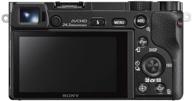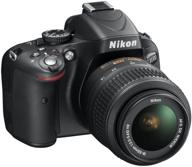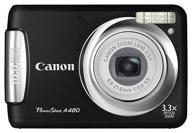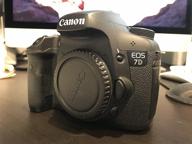
Review on 📷 Panasonic Lumix DMC-ZS1 10 Megapixel Digital Camera with 12x Wide Angle MEGA Optical Image Stabilized Zoom and 2.7-inch LCD Screen (Black) by Jordan Weakland

I can't tell the difference between 5 and 10 MP settings.
Pros first: Great zoom and great in low light. It will be difficult to find situations where you need a flash. Only competitor Sony can beat it in sharpness when zoomed in, but that could be because the wide-angle lens reduces the ZS1's sharpness. VGA/WVGA video, which I prefer because I only need it for internet video. I can't imagine how much PC time it takes to transfer, edit and download HD. Macros are as good as they get. "Good" specs, reasonable compared to other cameras: 2.7-inch LCD size is reasonable, but not as big as another reviewer claimed. The smaller screen isn't great, but it helps extend battery life. With no flash on the machine, the color and everything else seems fine. My own settings can hardly be better. The illumination is strong, contrary to the reviewer's comment, but the wide angle makes it difficult to achieve even illumination in such a wide field. If you reset and zoom in to make it look more like a regular camera (to reduce the field of view), the flash can be more consistent, possibly more consistent than others when you're further away. Unless you step back and zoom in, expect more shadows from the flash as it's too far from the lens, especially on the sides of the wide-angle. If the flash were above the lens, the shadows would be lower than the subject and thus less visible and more natural. But then again, the low light ability is so good that I don't expect to ever use a flash. I value even and natural light more than the extra sharpness the flash gives. The service seems as reasonable, good and quick as others I've tried. It is "complex" with no automatic setting like all others, and just as simple and accurate as others with automatic settings. Anti-shake allows you to go from 1/60 or 1/30 to 1/8 shutter speed, which is a huge improvement for any camera that has it, despite another reviewer's comment that the feature is overrated. Cons: For those used for regular digital cameras, maybe not the wide angle that causes the fisheye effect. For example, when photographing a family or people, you need to get a little closer or use the zoom. On the other hand, in some cases, a wide angle is preferable. Advanced users can capture images at a wider angle that other cameras cannot (there is no "reverse zoom” in regular cameras). The mic is on top instead of in front, which causes more echo from the ceiling in rooms, the person picking up the sound is too loud, and many people place their left index finger on the mic. Video: The wide angle is much better for videos than for photos. . Zooming is unbearably slow during video, which is intentional because most people zoom the video too much. But scaling does not start immediately and too slowly. This is my only complaint about the video. As with many cameras, videos are saved as Quicktime .mov files. It is not possible to edit the beginning and end of the video on the camera, which would be nice. Memory usage is 1.2MB/s, so a 16GB Class 6 SD card can store 3.8 hours. For web use, I found that converting to .avi with 85% Indio compression resulted in 5x smaller files. You will need to convert the .mov file to .avi using one of several free online tools in order for it to be editable on a Windows computer. . Normal pictures, zoom and macro shots were all of the same quality at 5MP and 10MP settings, although the timer prevents blurring. Choosing standard 5MP compression versus precise 10MP compression resulted in files being 4x smaller with no loss of quality in all conditions when images were zoomed in to see detail. Smaller files are much less likely to get stuck on your computer when editing and viewing thumbnails. Perhaps the 10 megapixel camera is used for a better digital zoom. This situation can occur with all 5 MP+ cameras. All this does not apply to the average user who only uses images for the computer, in which case 2 MP will be enough. Most MP settings are disabled in automatic mode: Unfortunately, the default compression is disabled in automatic mode, leaving 80% of users with files twice the size they need. My favorite 2 MPs are not allowed. I need to use 3MP. In combination with disabling default storage, all my files should be 3 times larger than necessary for work on the computer when using automatic settings. A typical computer screen is less than 1MP, so it seems crazy that so many cameras (like this) don't allow you to capture 1MP footage. Since this camera doesn't upgrade by anything more than 5 MP, you basically only have 3 settings in Auto mode: 3 MP (4:3), 5 MP (4:3) and 2 MP (16:9) with forced fine adjustment. Storage (low compression). The latest 16:9 can be good for wide screen computers and HD TV viewing. It can show the hairs on a flea's legs 1 inch from the lens in sunlight. It can show detailed defects of every red, green and blue emitter in every pixel of my computer screen. Other interesting features: They became superfluous when setting up for different objects and lighting conditions. lots of options if you want them. For example baby photos and flower modes. The focus and lighting options have been expanded, e.g. B. tracking an object after freezing it with a half-click, or setting the lighting to background, foreground or spot. There's individual face recognition, but it doesn't sync with your eyes open. To have almost no delay between pressing the button and taking a photo, you have to press halfway first. In short, I think I'll get used to a wide-angle lens and even be glad to have one. Of course I like to take pictures without a flash. The zoom is excellent. It's almost a disaster that they don't allow default storage in auto settings.
- Cool product
- Something different
New products
Comments (0)
Top products in 📷 Digital Cameras

Revamped Sony Alpha a6000 Mirrorless Digital Camera: 24.3MP SLR Camera with 3.0-Inch LCD and Power Zoom Lens

103 Review

Nikon D5100 Digital SLR Camera with 18-55mm VR Lens - High Resolution 16.2MP

172 Review

Canon PowerShot A480 camera, black

108 Review

Discontinued Canon EOS 7D Digital SLR 📷 Camera Body Only with 18 MP CMOS Sensor

88 Review






